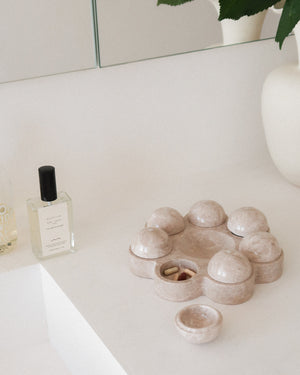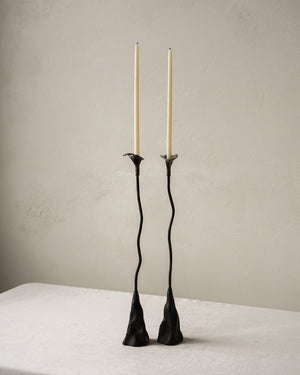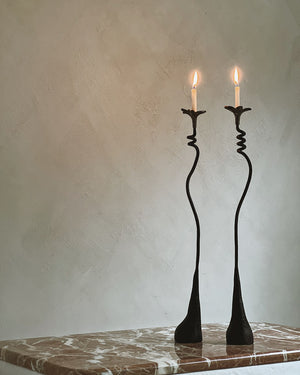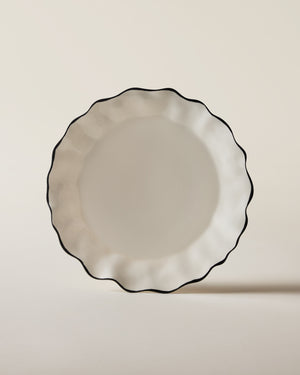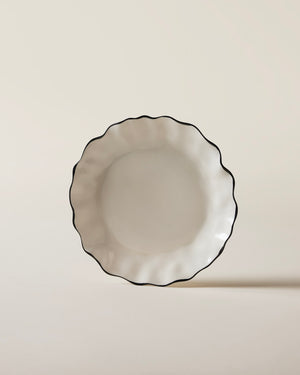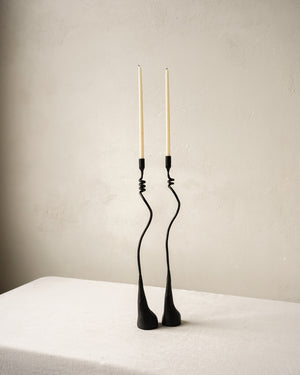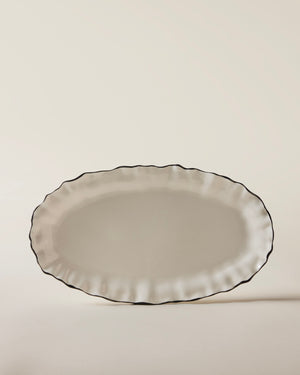GABRIELLA CRESPI

Born in Milan in 1922 to a distinguished family, Gabriella Crespi was a force who blended a sleek futuristic aesthetic with her profound sentiment for nature. Crespi made beautifully crafted objects and furniture with her skilled craftsmen, with whom she developed long and deep relationships. She was not an industrial designer; her production was limited, handcrafted, and niche. Crespi's style epitomized the cosmopolitan chic of the 1970's blending an effortless bohemian style with sophisticated baroque tendencies. Her work methods hark back to those of renaissance workshops fusing craftsmanship with a distinctive artistic approach. Crespi was the ultimate style icon with natural elegance. She did not follow fashion and instead favored a polished simplicity.
|
Photo: Oliviero Toscani / Courtesy of ©Gabriella Crespi Archive |
Photography by James Mollison for WSJ Magazine |
Gabriella Crespi's need for artistic expression ran deep. Her mother was a haute couture jewelry designer, and her father was a mechanical engineer. So Crespi was the perfect blend, mixing the creative with the technical. Crespi began by studying art at the Brera Academy of Fine Arts and then enrolled at the Faculty of Architecture at Milan's Politecnico Institute. It was very unconventional for women in the 1940's to choose a career in architecture; in fact, it was unusual for a woman to choose any career at all. On finishing school and starting her career, Crespi said:
"At that time, I needed all my courage to start. But challenges never discouraged me. My desire to go on was stronger than my fear of failing."

Gabriella Crespi's 1973 Puzzle Table - Francesca Morigi
|
Z Desk |
|
Crespi was not afraid of contrast, and her style is proof. Her designs had hints of mid-century modern and art nouveau without falling into either category. She mixed sleek contemporary mixed metals with softer natural materials like bamboo. Her work fully stands apart from any other designer at the time. However, you can see hints of influence from Pierre Cardin's futuristic style and Les Lalanne's surrealist gilded creations. Crespi always admired Le Corbusier and Frank Loyd Wright, probably because they considered nature fundamental to their projects.

Photography by James Mollison for WSJ Magazine
"My Inspiration is the Universe"
Nature and spirituality were always fundamental for Crespi. At 65, Gabriella Crespi decided to stop production, shutter her business and move to India, where she lived for 20 years. Her career was at its all-time high, but the pull to spiritual life was too strong for Crespi to ignore. Her daughter Elisabetta claims that "the quest for a deeper meaning for existing and her belief of belonging to a wider universal energy were reclaiming her."
|
Photo: Robert Emmett Bright / Courtesy of ©Gabriella Crespi Archive Yang Yin Desk, 1979 |
|
 Photography by James Mollison for WSJ Magazine
Photography by James Mollison for WSJ Magazine
SHOP THE GABRIELLA CRESPI EDIT:
|
Paper Screws Serving Set by Janie Kruse Garnett |
Callas from The Iron Series |
|
Side Table by Fitzhugh Karol |
Apple Candlestick Holder by Fakasaka |
|
Brutalist Brass Candlestick Holders Vintage |
The 810 Tray in Cherry Gold by Anastasio Home |
|
Cylinder Vase in Silver Mirror by Nathalee Paolinelli |
Flock from The Iron Series |
